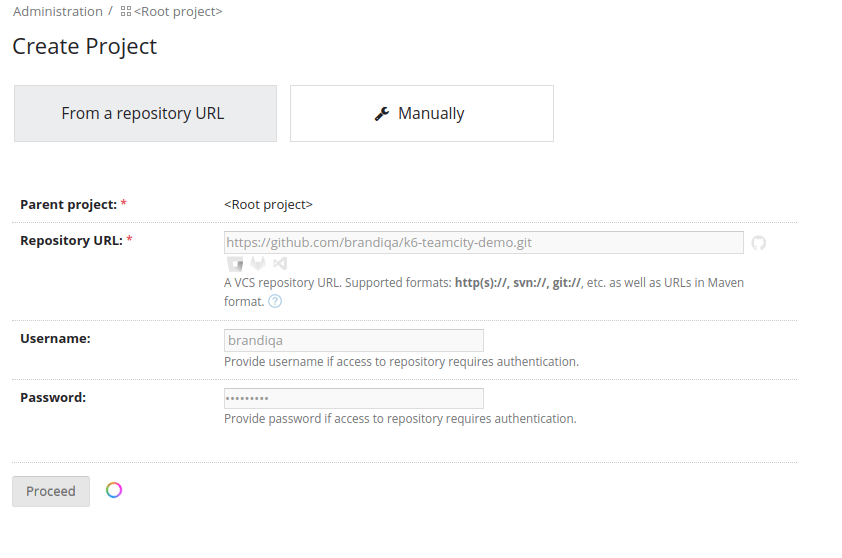

- #Teamcity tutorial how to#
- #Teamcity tutorial install#
- #Teamcity tutorial registration#
- #Teamcity tutorial software#
- #Teamcity tutorial code#

Now that TeamCity is successfully installed and configured we need to configure IIS to proxy web requests from port 80 to TomCat which is listening on port 8080.
#Teamcity tutorial registration#
In the following screen I have modified the default settings to prevent public registration – thus the only option when visiting the root of the TeamCity web app is to authenticate: Note that TeamCity is only available to be resolved via localhost:8080. once you have done this you should be prompted to log-in. TeamCity will now initialise and ask you to create an administrator account and configure a database. When you click "Finish" you will be taken to the new TeamCity instance. Next you will be asked which services you wish to start immediately: Next you will be presented with a screen that asks which Windows Account you wish to run the service under. Make a note of the location of the config file as you may need to edit it at some point in the future. Note that it has been configured to look at the port number listed in the previous screen:Ĭlick "save" and you will see a confirmation dialog. Next you will be presented with the "Configure Build Agent Properties" screen. This port number is used to configure TomCat which the Java based TeamCity server will be hosted in.īy default port 80 is entered – but this port is already being used by IIS 7, so change to port number to 8080 (assuming that you do not have another service listening on that port): Once the installation has finished you will be presented with the following screen, which asks you to specify the port number that TeamCity will run on. Click next to start the installation process. We have modified the configuration directory to sit inside the installation directory rather than in the user's profile folders. The default topology allows you to configure both the CI Server and the Build Agents onto the same box – if you have a large team, who make a large number of commits – it might be advisable to scale out the Build Agents onto separate boxes. Next select all the components you want installed on your server.
#Teamcity tutorial install#
We have modified the destination folder from the default (a Team City folder in the root of C) to install into Program Files (we are running on a 64bit server, hence the (x86)): The install experience is very straightforward, first run the installer:
#Teamcity tutorial how to#
In this Step by Step Guide we will show you how to configure TeamCity to run on Windows Server 2008 R2 and proxy requests through IIS 7 so that you can access your TeamCity server via a custom domain, for example įirst download the TeamCity Windows Installer (WAR / JAR version are also available) – this is a totally self contained package that contains a pre-configured Apache TomCat instance. We've believe that the combination of a virtualised development environment and a mature Continuous Integration Platform is a powerful one, especially because TeamCity allows us to easily scale out our build capacity by adding more Build Agents that can be hosted on Azure Virtual Machines or even Amazon EC2 instances. A 14-day free trial is being offered.By Howard van Rooijen Co-Founder 11th November 2010īecause we believe in working smarter, not harder, our Continuous Integration Server of choice is JetBrain's TeamCity. But the company stressed that users will not need plug-ins for “99 percent” of projects, since there is out-of-the-box support for popular tools and frameworks.ĭevelopers can sign up for TeamCity Cloud at. JetBrains also is working on an enterprise plan to support plug-ins and various customization options, expected by the end of the year. For now, Apple developers can install a TeamCity Build agent on their Mac and connect as a self-hosted build agent. Native support for MacOS will be available later in 2021. Still due to arrive in TeamCity Cloud is MacOS support, with the platform currently only supporting Linux and Windows build agents.
#Teamcity tutorial code#
Test history is analyzed and saved, with developers apprised of code quality over time. Almost all features are available via a RESTful API, to integrate TeamCity with applications or interact with it via scripts. TeamCity Cloud allows developers to configure CI/CD pipelines via a web UI or build them programmatically using the Kotlin language. Based on the original TeamCity CI/CD server, the cloud service integrates with version control systems, issue trackers, IDEs, and cloud providers, with JetBrains taking care of updating build tools and installing security patches.
#Teamcity tutorial software#
Introduced April 27, after having been beta tested by nearly 5,000 users, TeamCity Cloud is intended for software development teams who want to escape the burden of maintaining their own infrastructure. JetBrains is taking its TeamCity CI/CD ( continuous integration/continuous delivery) platform to the cloud, with the introduction of the TeamCity Cloud service.


 0 kommentar(er)
0 kommentar(er)
